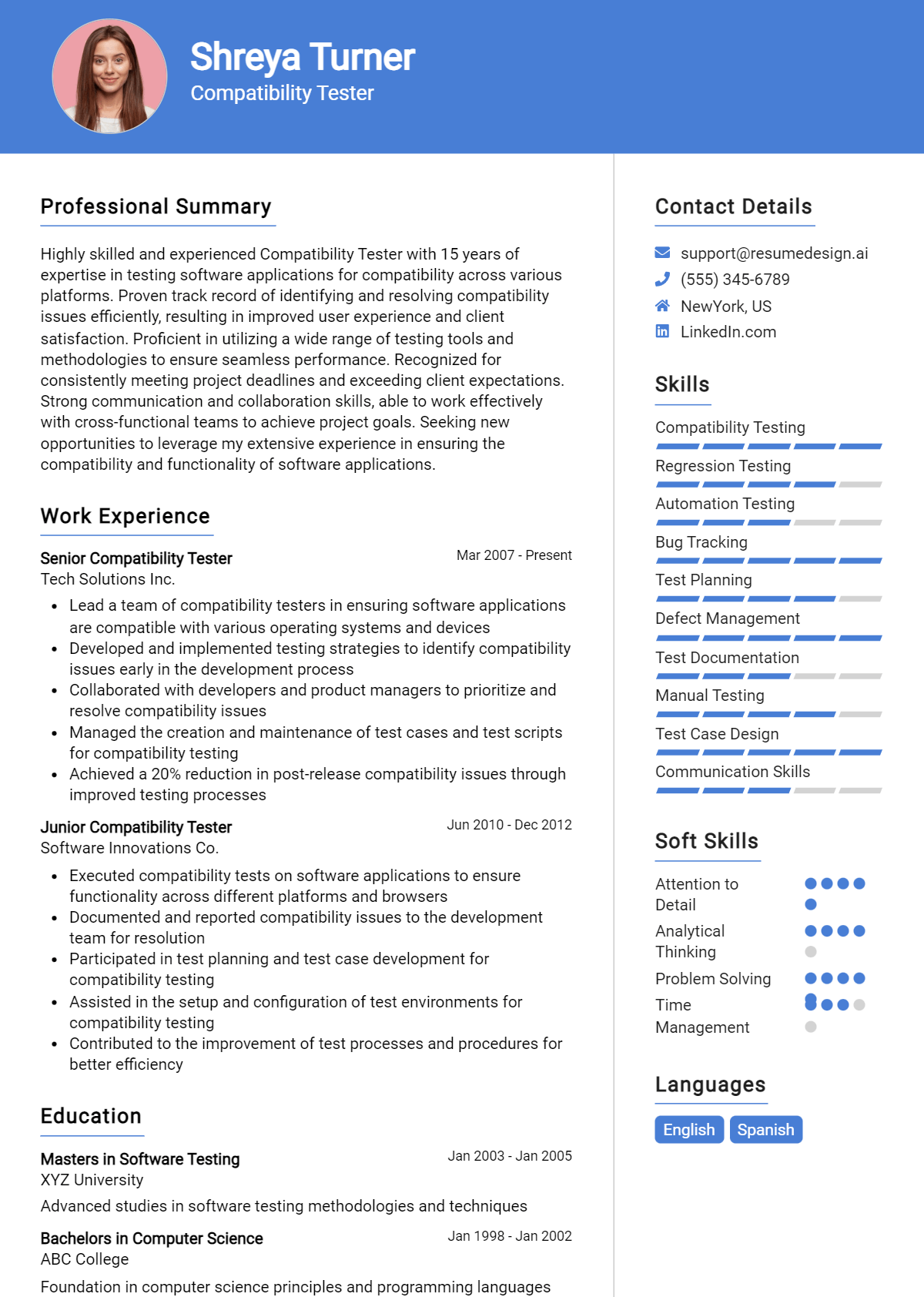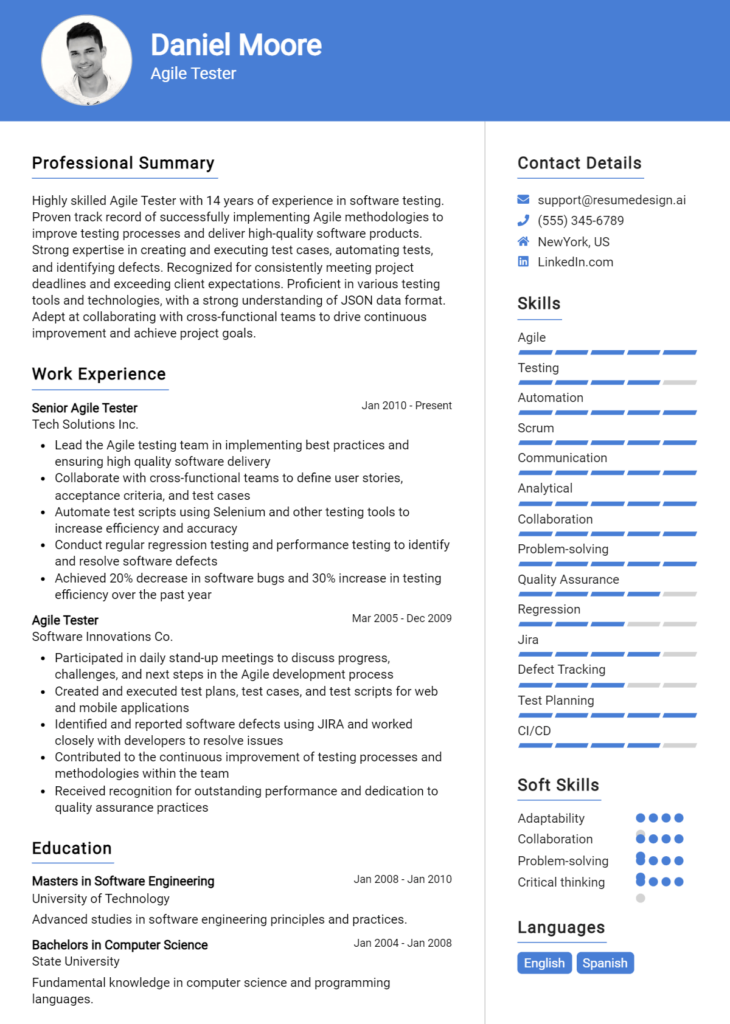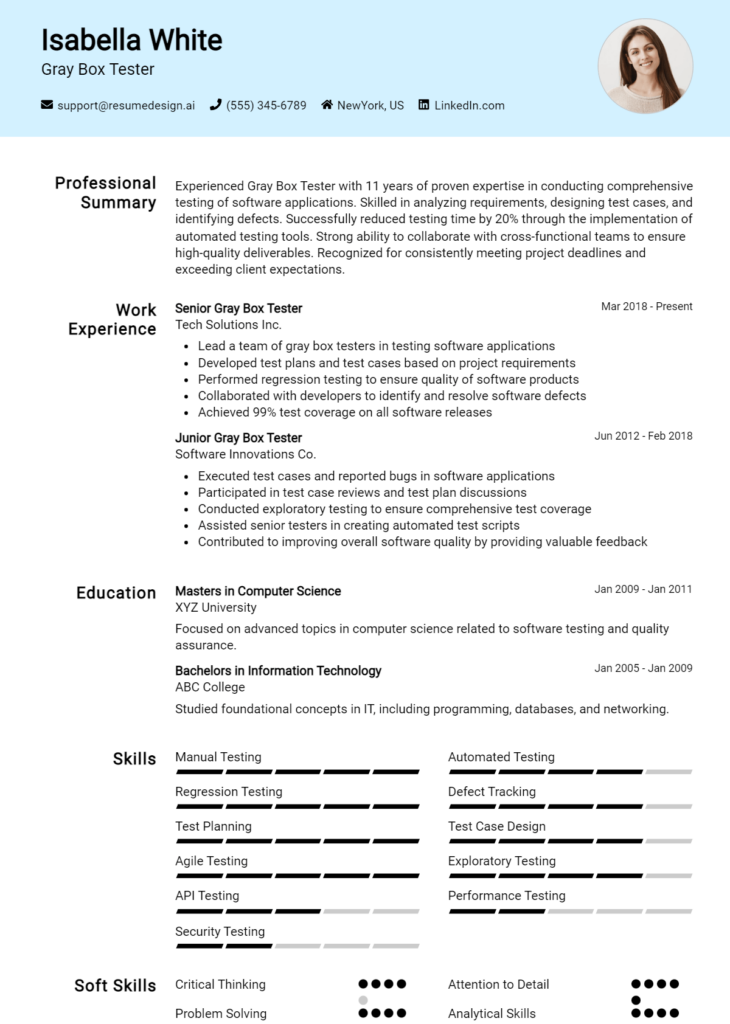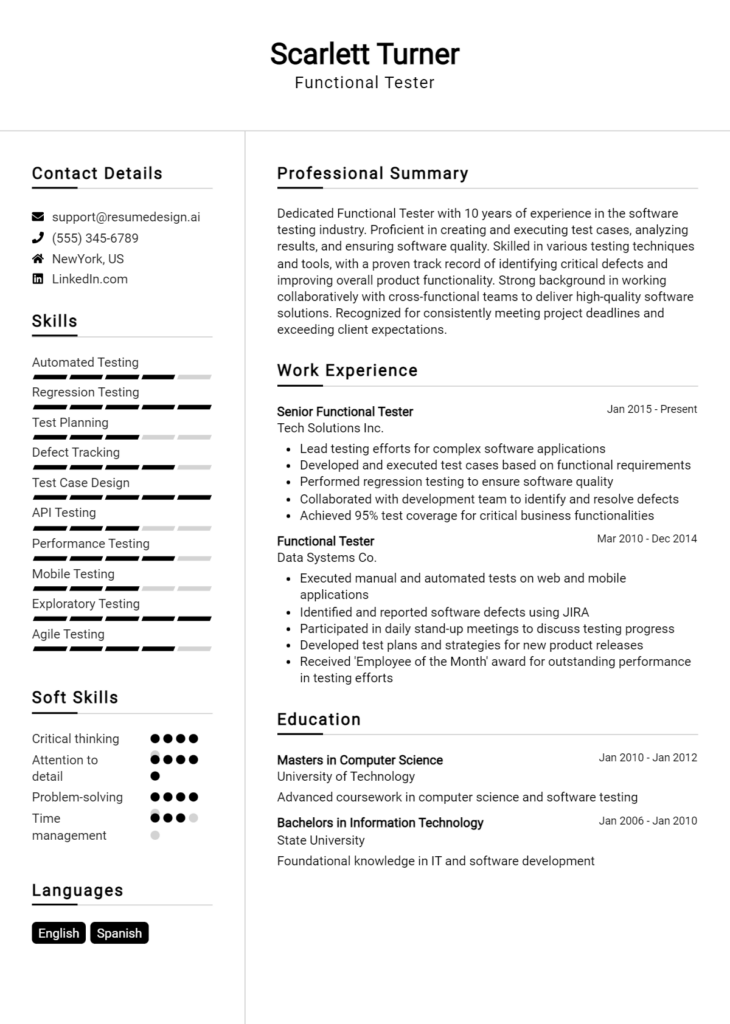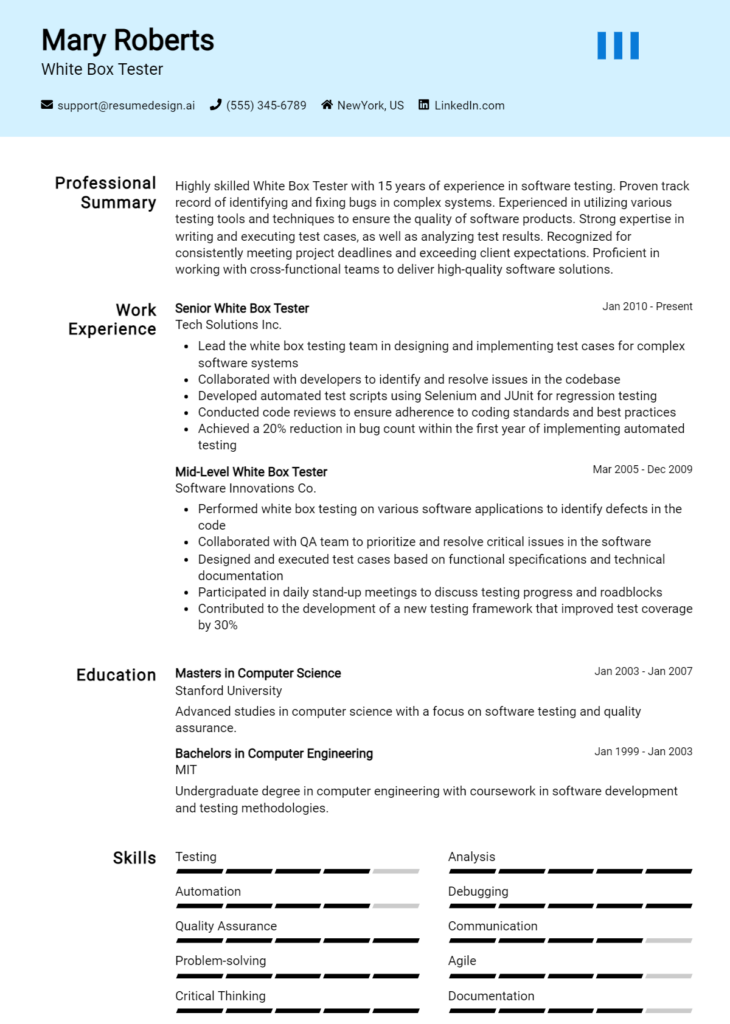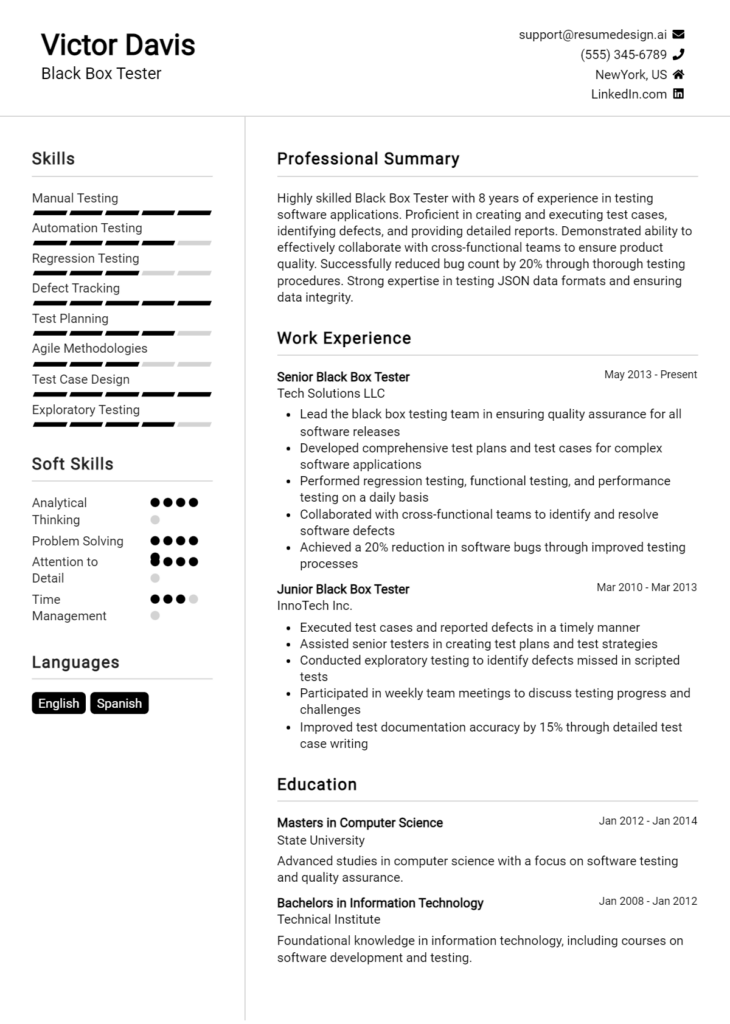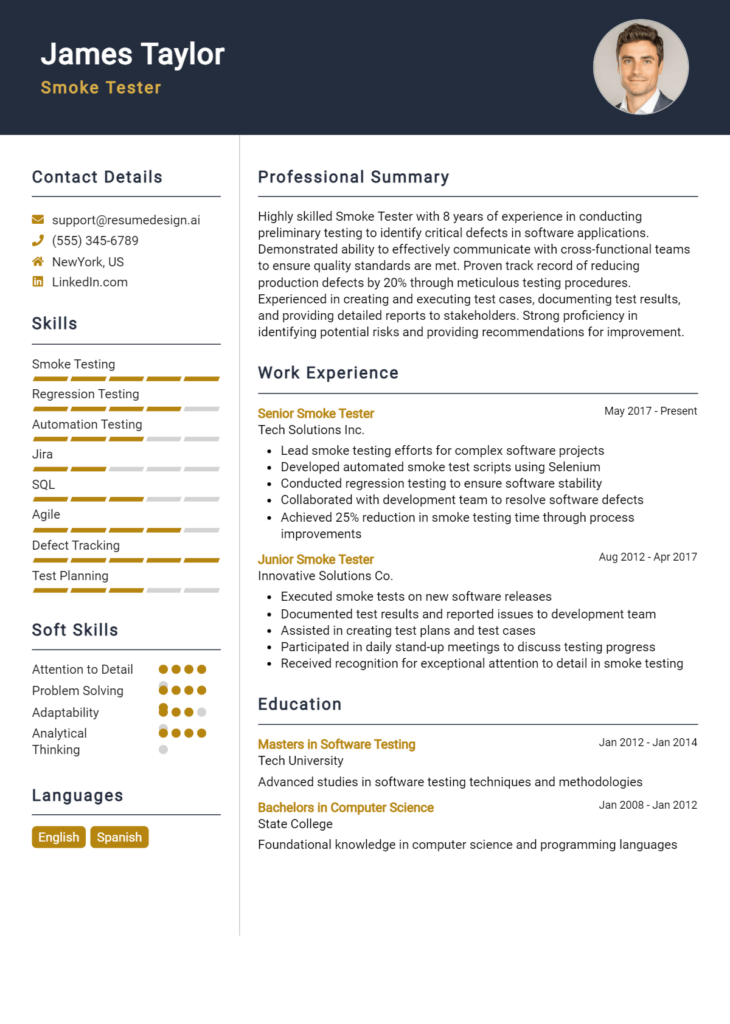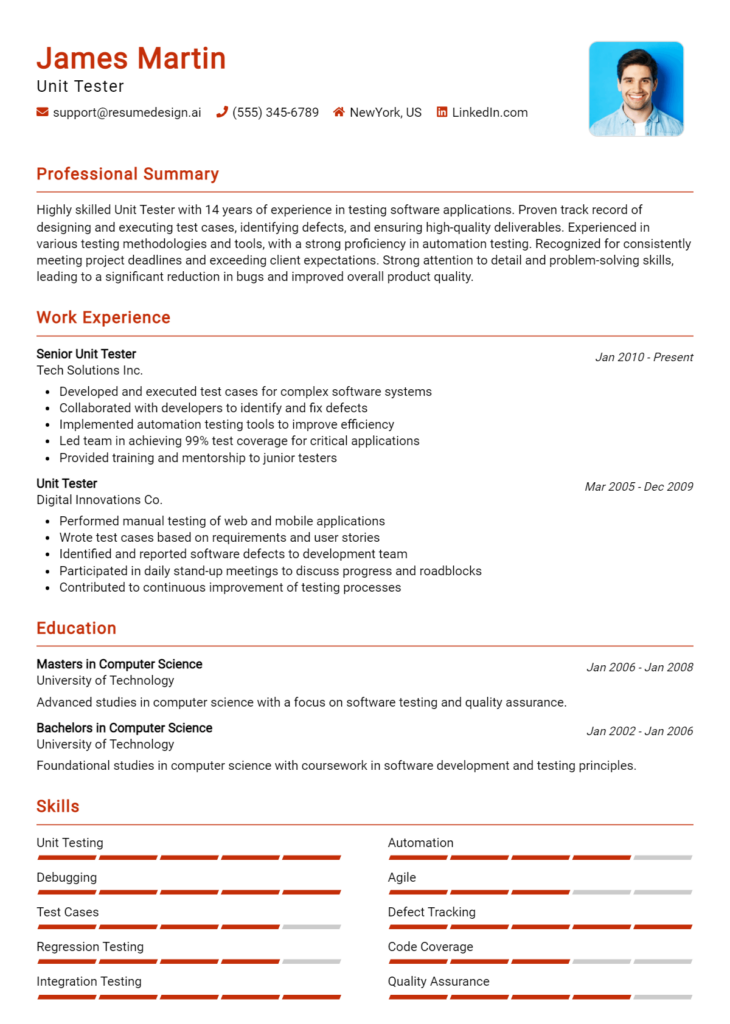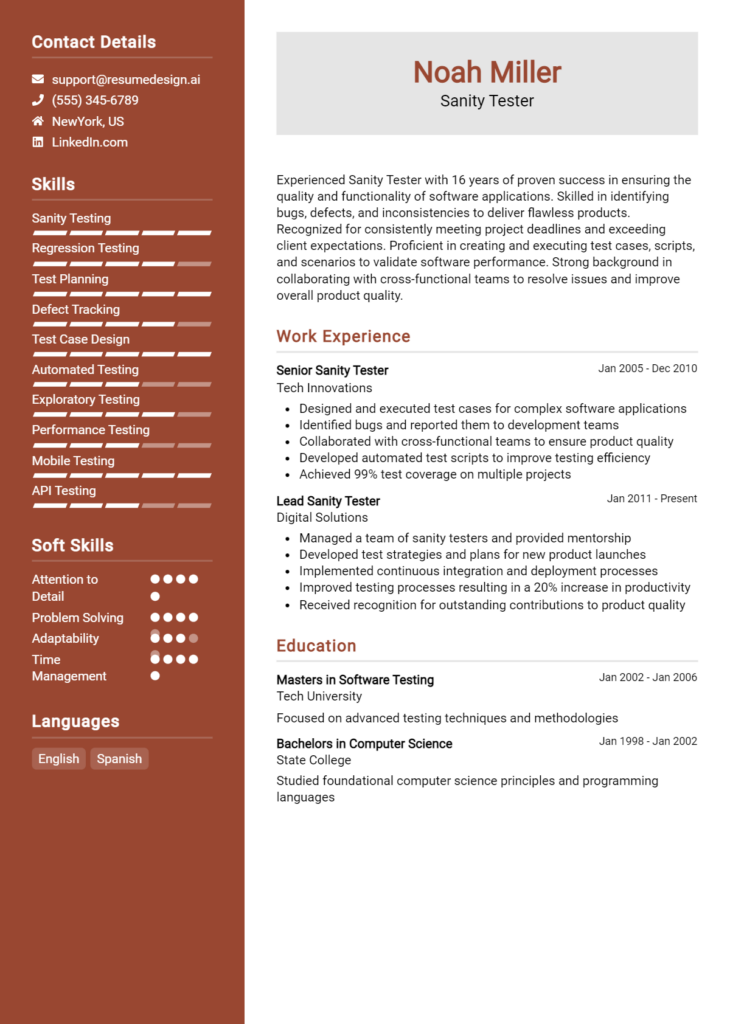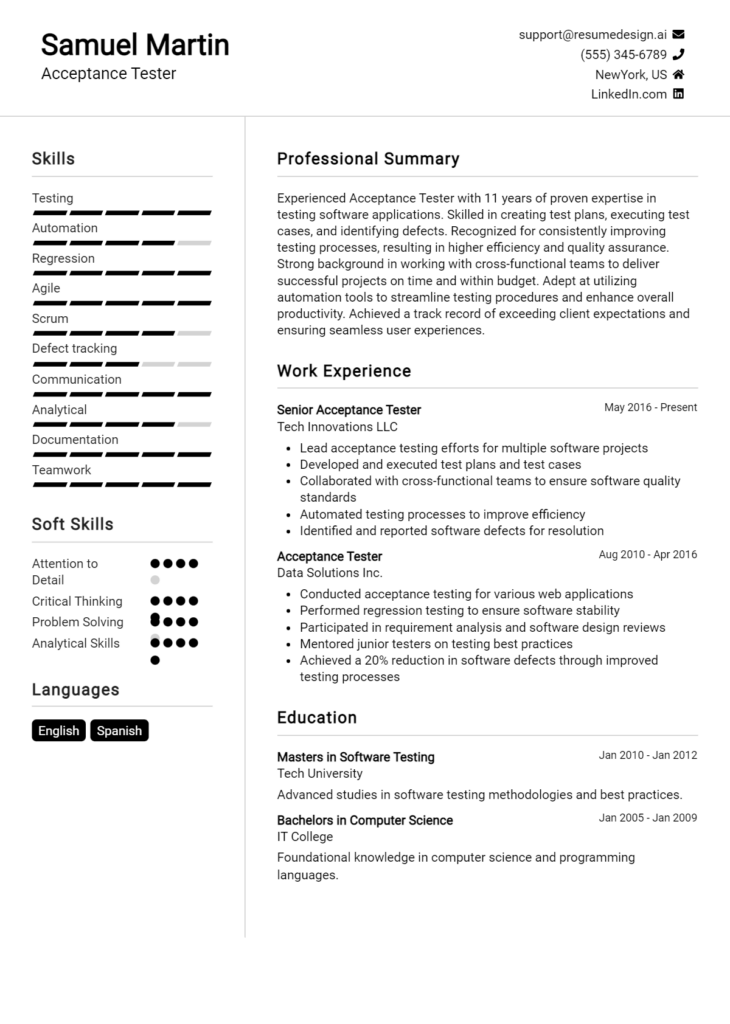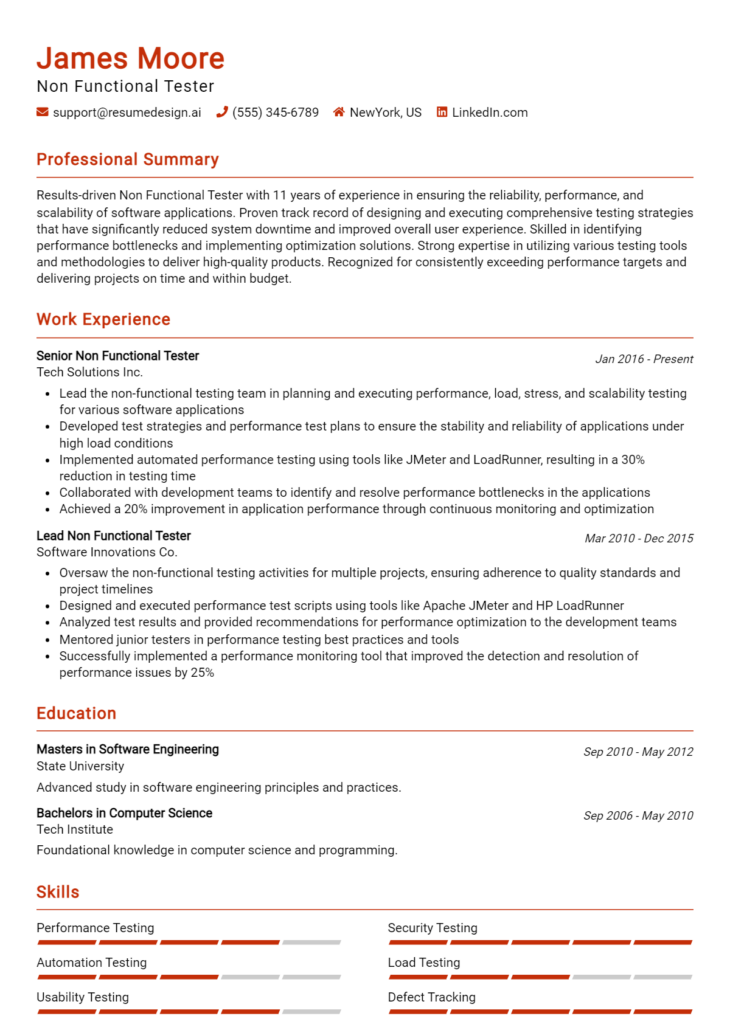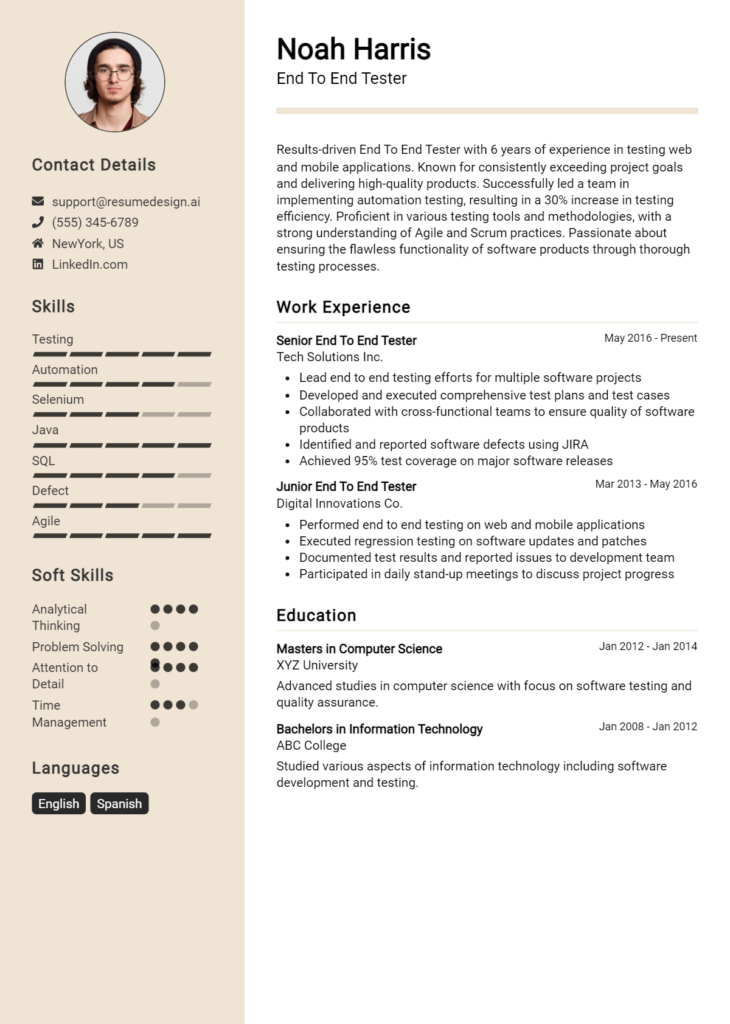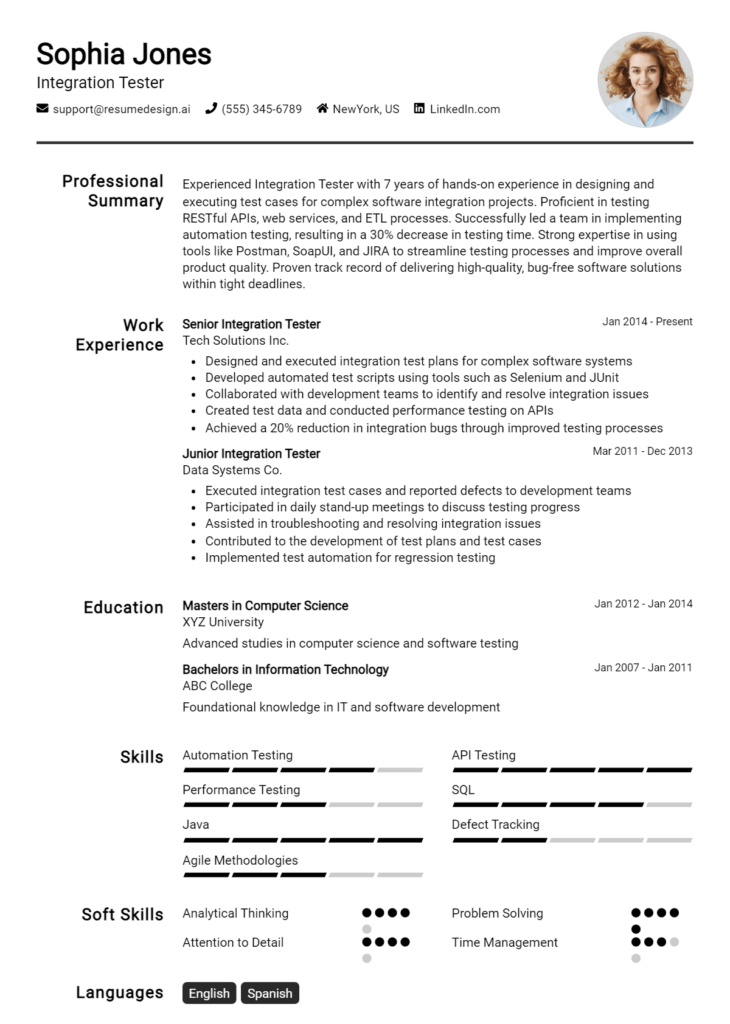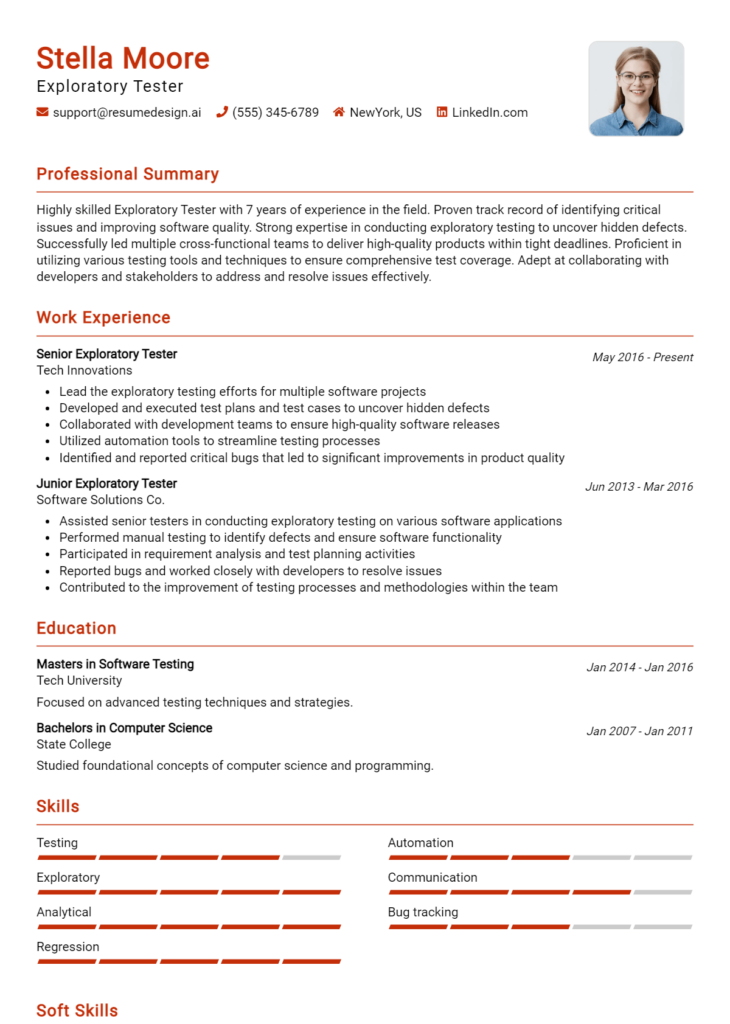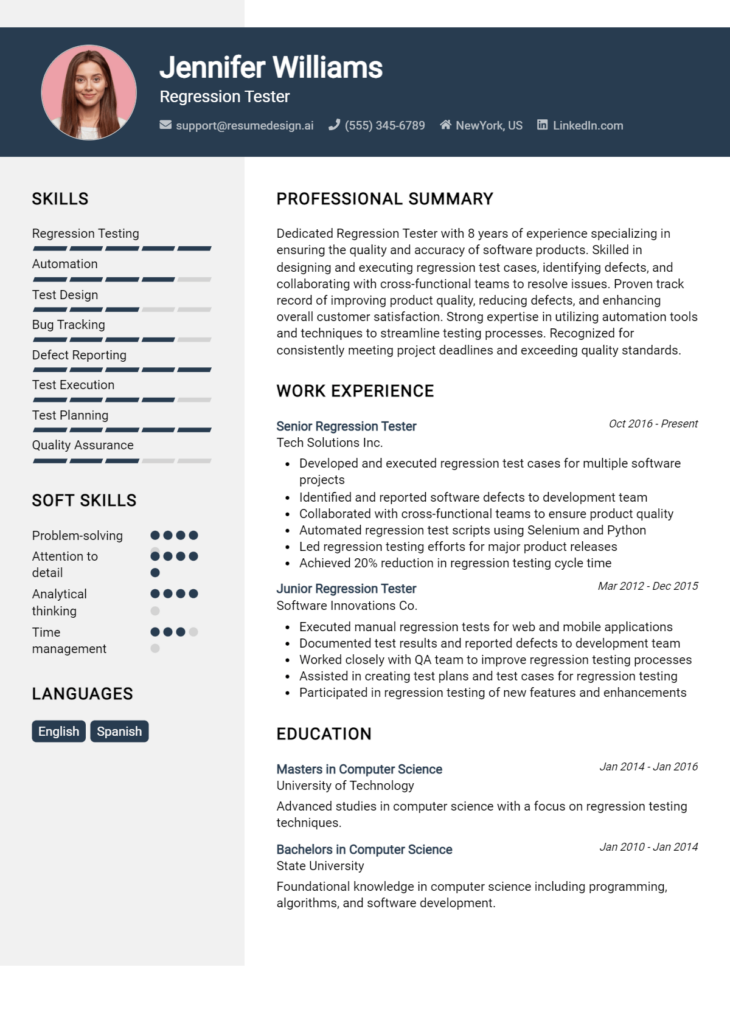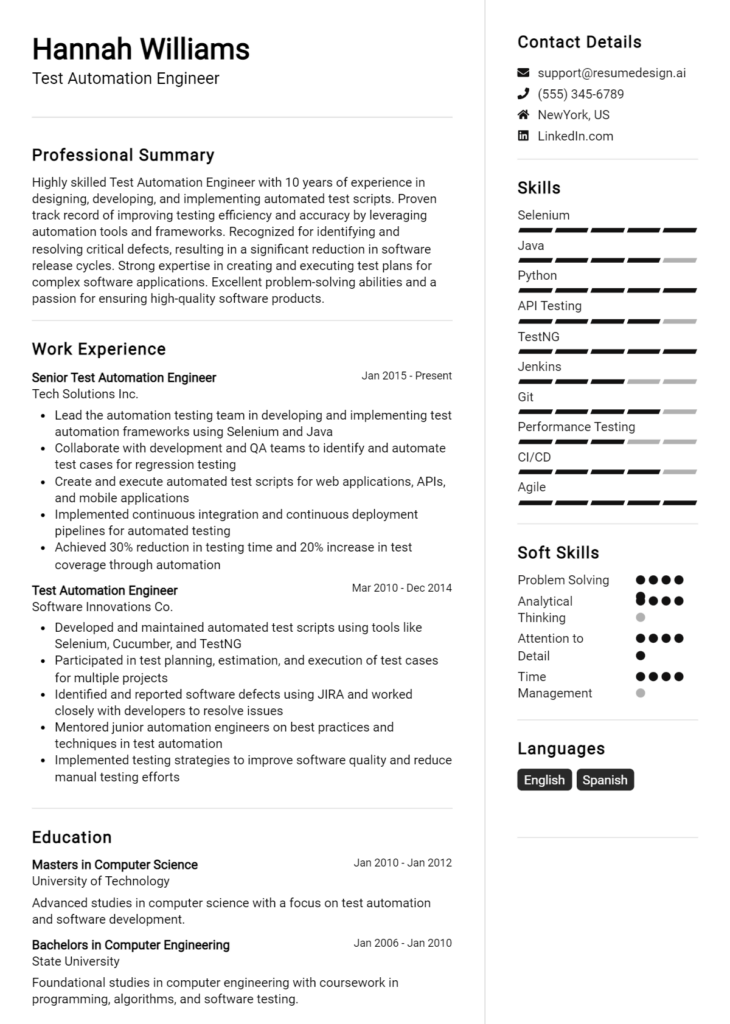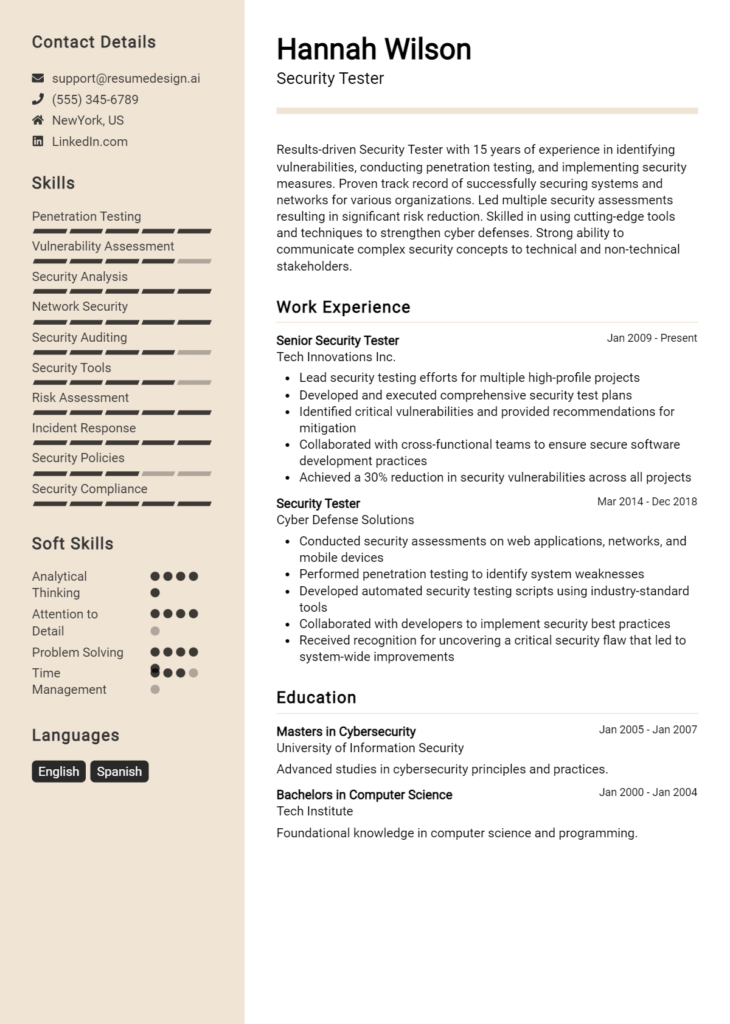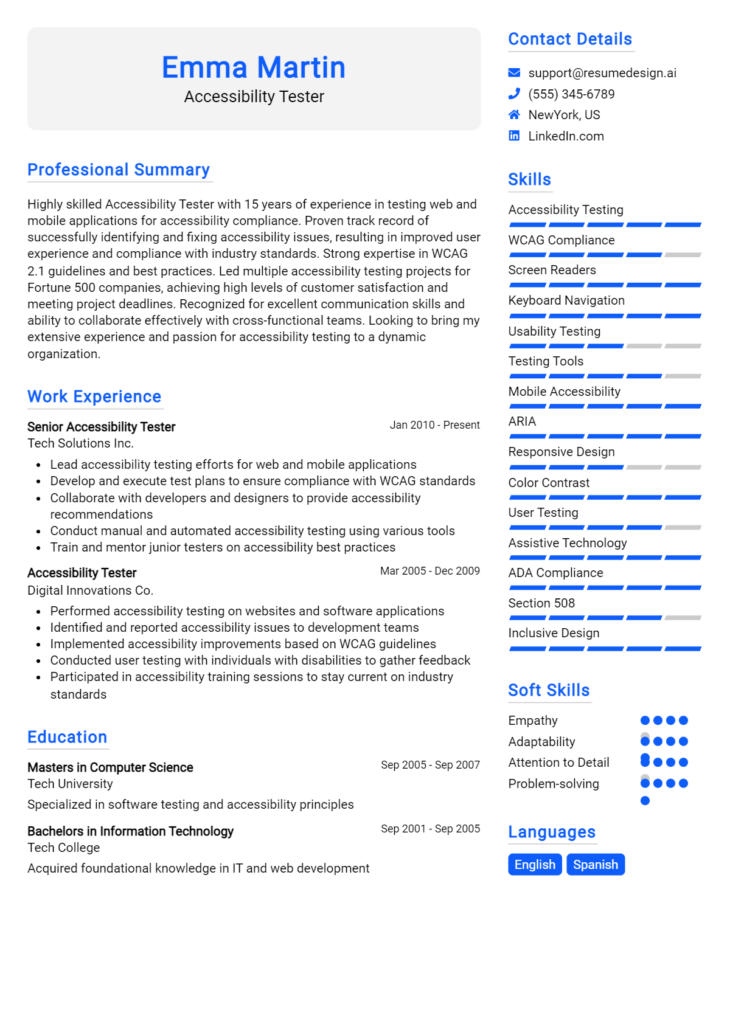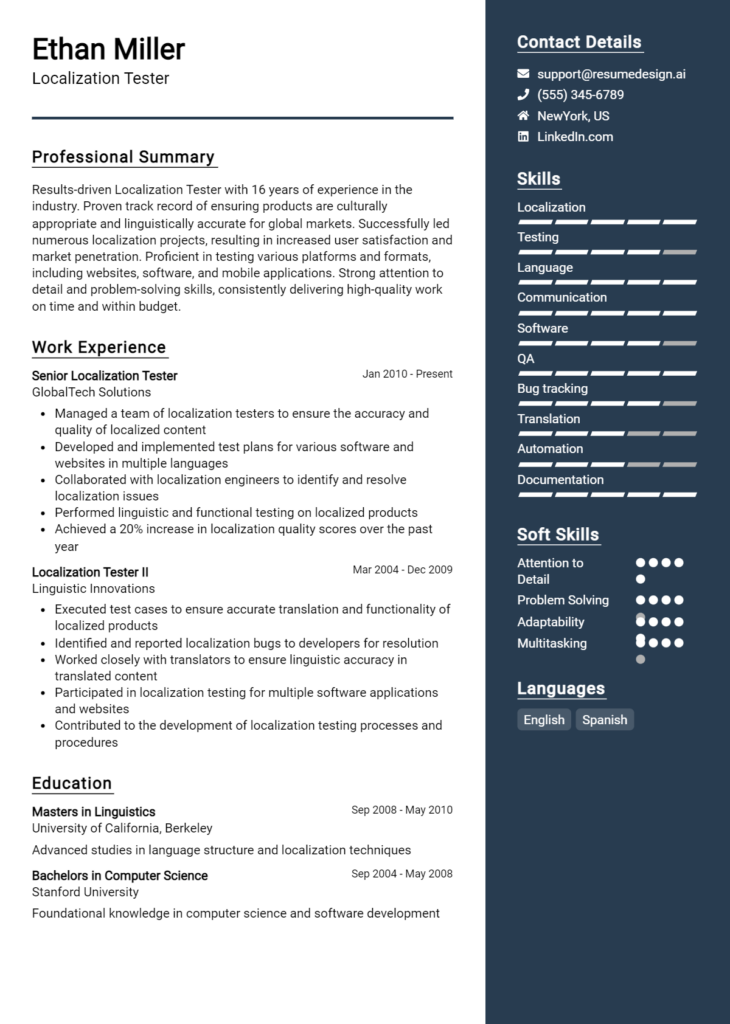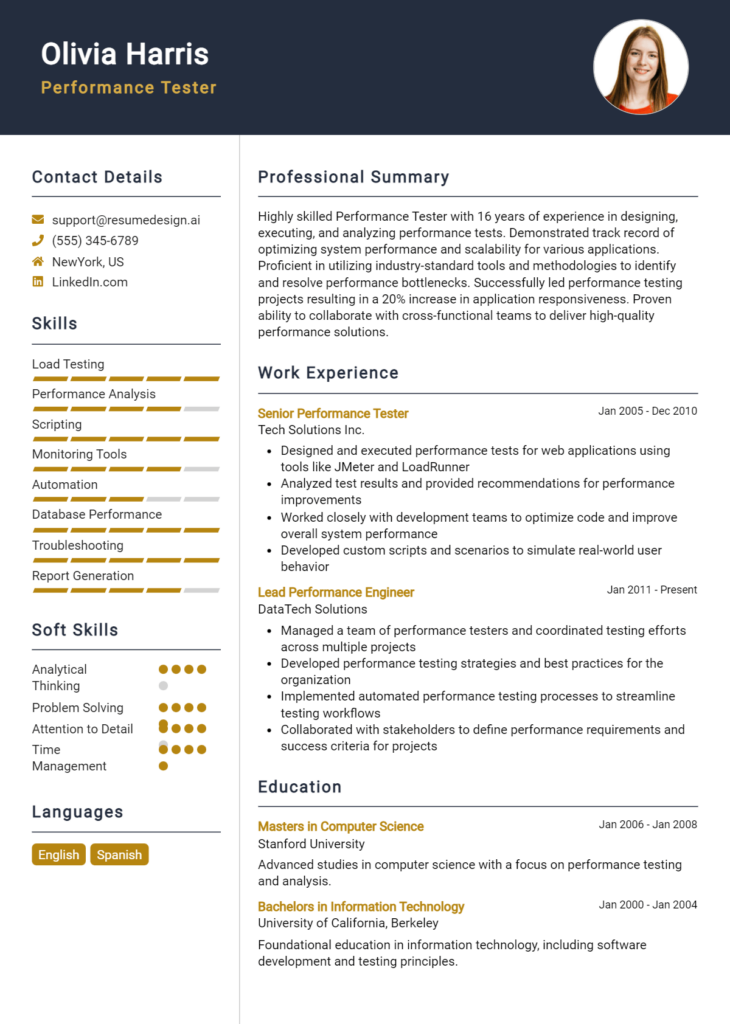Compatibility Tester Core Responsibilities
A Compatibility Tester plays a crucial role in ensuring that software applications function seamlessly across various platforms and devices. This position requires strong technical skills in software testing, operational analysis, and problem-solving abilities to identify compatibility issues effectively. The role serves as a bridge between development, quality assurance, and user experience teams, fostering collaboration to meet organizational goals. A well-structured resume highlighting these competencies can significantly enhance a candidate's appeal to potential employers.
Common Responsibilities Listed on Compatibility Tester Resume
- Conduct comprehensive compatibility testing across multiple platforms and devices.
- Develop and execute test plans and test cases based on project requirements.
- Identify, document, and track software defects and issues.
- Collaborate with development and QA teams to resolve compatibility issues.
- Analyze test results and provide feedback to enhance software performance.
- Maintain detailed records of testing processes and results.
- Stay updated on emerging technologies and industry trends.
- Assist in the development of automated testing scripts.
- Participate in cross-functional meetings to discuss testing strategies.
- Provide technical support and guidance to team members.
- Ensure adherence to quality standards and best practices.
High-Level Resume Tips for Compatibility Tester Professionals
In today’s competitive job market, a well-crafted resume is essential for Compatibility Tester professionals looking to make a strong first impression on potential employers. Your resume serves as your personal advertisement, showcasing not only your technical skills but also your accomplishments in ensuring that software applications work seamlessly across various platforms and devices. It is crucial that your resume reflects both your expertise and the specific requirements outlined in job descriptions. This guide will provide practical and actionable resume tips specifically tailored for Compatibility Tester professionals, ensuring you present yourself in the best possible light.
Top Resume Tips for Compatibility Tester Professionals
- Tailor your resume to the job description by including keywords and phrases that match the specific requirements of the position.
- Highlight your relevant experience in testing methodologies, particularly in compatibility testing across different devices, operating systems, and browsers.
- Quantify your achievements by using metrics, such as the percentage of bugs identified during testing, improvements in software performance, or reductions in compatibility issues.
- Showcase your technical skills by listing specific tools and technologies you are proficient in, such as Selenium, JIRA, or TestRail.
- Include any certifications or training related to software testing or quality assurance to enhance your credibility.
- Emphasize your problem-solving abilities and critical thinking skills, providing examples of how you've successfully identified and resolved compatibility issues.
- Incorporate a professional summary that succinctly outlines your experience and the unique value you bring to a potential employer.
- Use clear and concise language, avoiding jargon unless it is widely recognized in the industry to ensure clarity for all potential readers.
- Keep your resume format clean and organized, utilizing bullet points for easy readability and ensuring that it is visually appealing.
By implementing these resume tips, Compatibility Tester professionals can significantly enhance their chances of landing a job in the field. A well-structured and tailored resume not only showcases your relevant experience and skills but also demonstrates your attention to detail—a critical attribute in the world of software testing. Take the time to craft a standout resume, and you’ll be one step closer to securing your desired position.
Why Resume Headlines & Titles are Important for Compatibility Tester
In the competitive field of software testing, particularly for the role of a Compatibility Tester, the importance of a well-crafted resume headline or title cannot be overstated. A strong headline serves as a powerful first impression, instantly capturing the attention of hiring managers and summarizing a candidate's key qualifications in a single, impactful phrase. It should be concise, relevant, and tailored specifically to the job being applied for, ensuring that it resonates with the employer's needs while highlighting the candidate's unique strengths and expertise in compatibility testing.
Best Practices for Crafting Resume Headlines for Compatibility Tester
- Keep it concise: Aim for a headline that is no longer than 10-12 words.
- Make it role-specific: Use industry-specific terminology related to compatibility testing.
- Highlight key skills: Focus on the most relevant skills that align with the job description.
- Include experience level: Mention your years of experience to establish credibility.
- Showcase accomplishments: If applicable, reference a specific achievement or certification.
- Use action words: Start with a strong verb that conveys confidence and expertise.
- Avoid jargon: Ensure clarity by using straightforward language that is easily understood.
- Tailor for each application: Customize your headline for different job postings to enhance relevance.
Example Resume Headlines for Compatibility Tester
Strong Resume Headlines
Detail-Oriented Compatibility Tester with 5+ Years of Experience in Cross-Platform Testing
Certified Compatibility Tester Specialized in Mobile and Web Applications
Results-Driven Compatibility Tester with Proven Track Record in Quality Assurance
Expert Compatibility Tester Skilled in Automation Tools and Testing Frameworks
Weak Resume Headlines
Tester Looking for Job
Experienced in Software Testing
Compatibility Tester
The strong headlines are effective because they are specific, convey a clear message about the candidate's expertise, and use active language that engages the reader. They highlight not only the candidate's role but also their experience and achievements, making them memorable and relevant. In contrast, the weak headlines fail to impress due to their vagueness and lack of detail, providing little insight into the candidate's capabilities or unique qualifications. They do not stand out and may leave hiring managers questioning the candidate's suitability for the position.
Writing an Exceptional Compatibility Tester Resume Summary
A resume summary is a critical component for a Compatibility Tester, serving as a concise snapshot of the candidate's qualifications, skills, and experiences that directly relate to the role. In a competitive job market, hiring managers often skim through resumes quickly, making it essential for the summary to capture their attention immediately. A strong resume summary highlights key competencies, relevant accomplishments, and provides a compelling argument for why the candidate is the ideal fit for the position. This section should be impactful, succinct, and tailored specifically to align with the job description, ultimately setting the tone for the rest of the resume.
Best Practices for Writing a Compatibility Tester Resume Summary
- Quantify achievements to demonstrate impact (e.g., "Increased test coverage by 30%").
- Focus on relevant skills such as testing methodologies, tools, and technologies.
- Tailor the summary to match the specific job description and requirements.
- Keep it concise, ideally within 3-5 sentences.
- Use active language to convey confidence and assertiveness.
- Highlight unique accomplishments that set you apart from other candidates.
- Avoid jargon; use clear language that is easily understood.
- Incorporate soft skills that may be relevant, such as teamwork or problem-solving.
Example Compatibility Tester Resume Summaries
Strong Resume Summaries
Detail-oriented Compatibility Tester with over 5 years of experience in cross-platform testing, successfully reducing bug reports by 40% through meticulous verification processes and automated testing solutions.
Results-driven QA Engineer specializing in compatibility testing for mobile applications, achieving a 98% success rate in multi-device performance assessments, ensuring seamless user experiences across 50+ devices.
Dedicated Compatibility Tester with a proven track record in enhancing application reliability, leading to a 25% decrease in post-launch defects by implementing rigorous testing protocols and collaborating with development teams.
Weak Resume Summaries
Experienced tester looking for a new opportunity in a tech company.
I have worked in QA for several years and know a lot about software testing.
The strong resume summaries are effective because they quantify achievements, specify relevant skills, and directly connect to the role of a Compatibility Tester. They present clear evidence of past successes and the abilities that the candidate brings to the table. In contrast, the weak summaries lack specific details and measurable outcomes, making them vague and unmemorable, which can fail to capture a hiring manager's interest.
Work Experience Section for Compatibility Tester Resume
The work experience section of a Compatibility Tester resume is crucial as it serves as a direct reflection of the candidate's technical prowess and ability to contribute to team dynamics and product quality. This section not only highlights relevant job roles but also emphasizes the candidate's accomplishments in the field of software compatibility testing. By detailing specific technical skills, showcasing leadership abilities, and quantifying achievements, candidates can effectively demonstrate their value to potential employers. Aligning experiences with industry standards further enhances the credibility of the resume, making it essential for candidates to present their work history in a compelling manner.
Best Practices for Compatibility Tester Work Experience
- Clearly outline technical skills relevant to compatibility testing, such as proficiency in testing tools and frameworks.
- Quantify achievements with specific metrics, such as the percentage of bugs detected or improvements in testing efficiency.
- Highlight collaboration with cross-functional teams, illustrating your role in enhancing product quality.
- Use action verbs to convey proactive contributions, such as "developed," "implemented," or "led."
- Tailor the experience descriptions to align with industry standards and the job requirements of the position being applied for.
- Include any relevant certifications or training that bolster your technical qualifications.
- Showcase problem-solving examples that led to significant improvements or innovations in testing processes.
- Describe the impact of your work on end users, emphasizing user satisfaction and product reliability.
Example Work Experiences for Compatibility Tester
Strong Experiences
- Led a team of 5 testers in executing compatibility tests across 10 different devices, resulting in a 30% reduction in post-launch defects.
- Implemented automated testing scripts that improved testing efficiency by 25%, enabling faster release cycles without compromising quality.
- Collaborated with the development team to identify and resolve compatibility issues, enhancing user experience and increasing customer satisfaction scores by 15%.
- Designed and executed comprehensive testing plans that ensured 99% compatibility across multiple platforms, leading to a successful product launch.
Weak Experiences
- Performed testing activities as part of the team.
- Worked with various devices and software.
- Participated in meetings to discuss testing results.
- Helped identify some compatibility issues.
The strong experiences are considered effective because they emphasize quantifiable outcomes, demonstrate leadership, and highlight collaboration with other teams, showcasing the candidate's ability to drive results. In contrast, the weak experiences lack specificity and measurable achievements, making them less impactful and failing to convey the candidate's true potential in the compatibility testing field.
Education and Certifications Section for Compatibility Tester Resume
The education and certifications section is a vital component of a Compatibility Tester resume as it showcases the candidate's academic background and relevant industry qualifications. This section not only highlights formal degrees and certifications but also emphasizes the candidate’s commitment to continuous learning in a rapidly evolving field. By including relevant coursework, industry-recognized certifications, and any specialized training, candidates can significantly enhance their credibility and demonstrate their alignment with the requirements of the Compatibility Tester role. This can ultimately set them apart from other applicants and illustrate their preparedness for the job.
Best Practices for Compatibility Tester Education and Certifications
- Focus on relevant degrees, such as Computer Science, Software Engineering, or Information Technology.
- Include industry-recognized certifications like ISTQB, Certified Software Tester (CST), or specific platform certifications.
- Highlight relevant coursework that relates directly to compatibility testing, such as software testing methodologies or quality assurance processes.
- List certifications in order of relevance, starting with the most significant for the role.
- Be specific about the skills gained from certifications and training that are applicable to compatibility testing.
- Keep the section updated with the latest certifications and training to reflect continuous professional development.
- Avoid listing outdated or irrelevant qualifications that do not contribute to the role of a Compatibility Tester.
- Use clear formatting to enhance readability and make key qualifications stand out.
Example Education and Certifications for Compatibility Tester
Strong Examples
- Bachelor of Science in Computer Science, XYZ University, 2021
- ISTQB Certified Tester, Foundation Level (CTFL), 2022
- Advanced Software Testing Certification, ABC Institute, 2023
- Coursework: Software Quality Assurance and Testing Techniques, 2020
Weak Examples
- Bachelor of Arts in English Literature, XYZ University, 2019
- Microsoft Office Specialist Certification, 2020
- High School Diploma, ABC High School, 2018
- Certified Novell Administrator (CNA), 2015
The strong examples are considered relevant because they directly align with the skills and knowledge required for a Compatibility Tester role, including degrees and certifications that are recognized in the industry. In contrast, the weak examples demonstrate a lack of relevance to the field of software testing and compatibility, showcasing qualifications that do not contribute to the candidate's ability to perform effectively in this role. These distinctions highlight the importance of tailoring educational qualifications to match the job requirements.
Top Skills & Keywords for Compatibility Tester Resume
As a Compatibility Tester, possessing a strong set of skills is crucial for ensuring that software applications function seamlessly across various platforms, devices, and operating systems. The role requires a keen eye for detail, analytical thinking, and the ability to communicate effectively with developers and stakeholders. Highlighting the right skills on your resume not only showcases your qualifications but also demonstrates your understanding of the complexities involved in software compatibility. By focusing on both hard and soft skills, you can present a well-rounded profile that appeals to potential employers seeking candidates who can contribute to successful product launches and enhance user experiences.
Top Hard & Soft Skills for Compatibility Tester
Soft Skills
- Attention to Detail
- Problem-Solving
- Critical Thinking
- Communication Skills
- Team Collaboration
- Adaptability
- Time Management
- Analytical Skills
- Creativity
- Customer Focus
Hard Skills
- Knowledge of Testing Tools (e.g., Selenium, JIRA)
- Understanding of Software Development Life Cycle (SDLC)
- Proficiency in Various Operating Systems (e.g., Windows, macOS, Linux)
- Experience with Mobile and Web Application Testing
- Familiarity with Database Management (SQL)
- Scripting Skills (e.g., Python, JavaScript)
- Performance Testing Techniques
- Knowledge of API Testing
- Version Control Systems (e.g., Git)
- Familiarity with Bug Tracking Systems
By effectively showcasing these skills and your relevant work experience, you can create a compelling Compatibility Tester resume that stands out in a competitive job market.
Stand Out with a Winning Compatibility Tester Cover Letter
I am writing to express my interest in the Compatibility Tester position at [Company Name], as advertised on [where you found the job listing]. With a solid background in software testing and a keen eye for detail, I am excited about the opportunity to contribute to your team and ensure that your products deliver a seamless experience across various platforms and devices.
In my previous role at [Previous Company Name], I successfully conducted compatibility testing on multiple applications, collaborating closely with developers and project managers to identify and resolve issues before product launches. My experience has equipped me with a strong understanding of various operating systems, browsers, and mobile platforms. I utilized automation tools and manual testing techniques to evaluate performance and functionality, ensuring that all user requirements were met. My commitment to quality assurance and my proactive approach in detecting compatibility issues have consistently resulted in enhanced user satisfaction and reduced post-launch defects.
I am particularly drawn to this role at [Company Name] because of your commitment to innovation and excellence in software development. I believe that my analytical skills, combined with my passion for technology, will help me to effectively identify potential compatibility challenges within your products. I am adept at creating detailed test plans and documentation, and I thrive in collaborative environments where I can share insights and contribute to continuous improvement processes.
Thank you for considering my application. I am eager to bring my expertise in compatibility testing to the talented team at [Company Name]. I look forward to the opportunity to discuss how my skills and experiences align with your needs and how I can contribute to the continued success of your products.
Common Mistakes to Avoid in a Compatibility Tester Resume
When crafting a resume for a Compatibility Tester position, it's crucial to present your skills and experience effectively. A poorly structured or careless resume can lead to missed opportunities, even if you possess the necessary qualifications. Below are some common mistakes that candidates often make, which can undermine their chances of landing an interview:
Lack of Specificity: Failing to provide specific examples of compatibility testing experiences can make your resume vague. Highlight particular projects or tools you've used to demonstrate your expertise.
Ignoring Keywords: Many companies use Applicant Tracking Systems (ATS) to filter resumes. Not incorporating relevant keywords from the job description can result in your resume being overlooked.
Overlooking Soft Skills: While technical skills are essential, compatibility testers also need strong communication and problem-solving abilities. Neglecting to showcase these can weaken your application.
Poor Formatting: A cluttered or unprofessional format can detract from your content. Use clear headings, bullet points, and consistent fonts to enhance readability.
Not Tailoring the Resume: Sending out a generic resume for every job application can be detrimental. Tailor your resume to reflect the specific requirements and preferences of each employer.
Neglecting Continuous Learning: Failing to mention ongoing education or certifications related to compatibility testing can suggest a lack of motivation for professional development.
Including Irrelevant Experience: Adding unrelated work experiences can clutter your resume. Focus on experiences that directly relate to compatibility testing or showcase transferable skills.
Typos and Grammatical Errors: Simple mistakes can create a negative impression. Always proofread your resume to ensure it is free of errors and presents a polished image.
Conclusion
As a Compatibility Tester, your role is crucial in ensuring that software applications function seamlessly across different platforms, devices, and operating systems. This involves rigorous testing procedures, attention to detail, and a deep understanding of both software development and user experience. Key responsibilities include identifying compatibility issues, documenting findings, collaborating with development teams, and providing insights that help enhance product performance.
To excel in this field, it's essential to showcase your skills effectively in your resume. Highlight relevant experience, technical expertise, and specific tools or methodologies you're proficient in. Tailoring your resume to reflect the competencies sought by employers can significantly improve your chances of landing an interview.
Now is the perfect time to review your Compatibility Tester resume. Make sure it's polished and up-to-date to stand out in a competitive job market. Utilize resources like resume templates, a resume builder, and resume examples to create an impactful resume. Don’t forget to complement your application with a strong cover letter using our cover letter templates. Take action today and enhance your job application materials!

